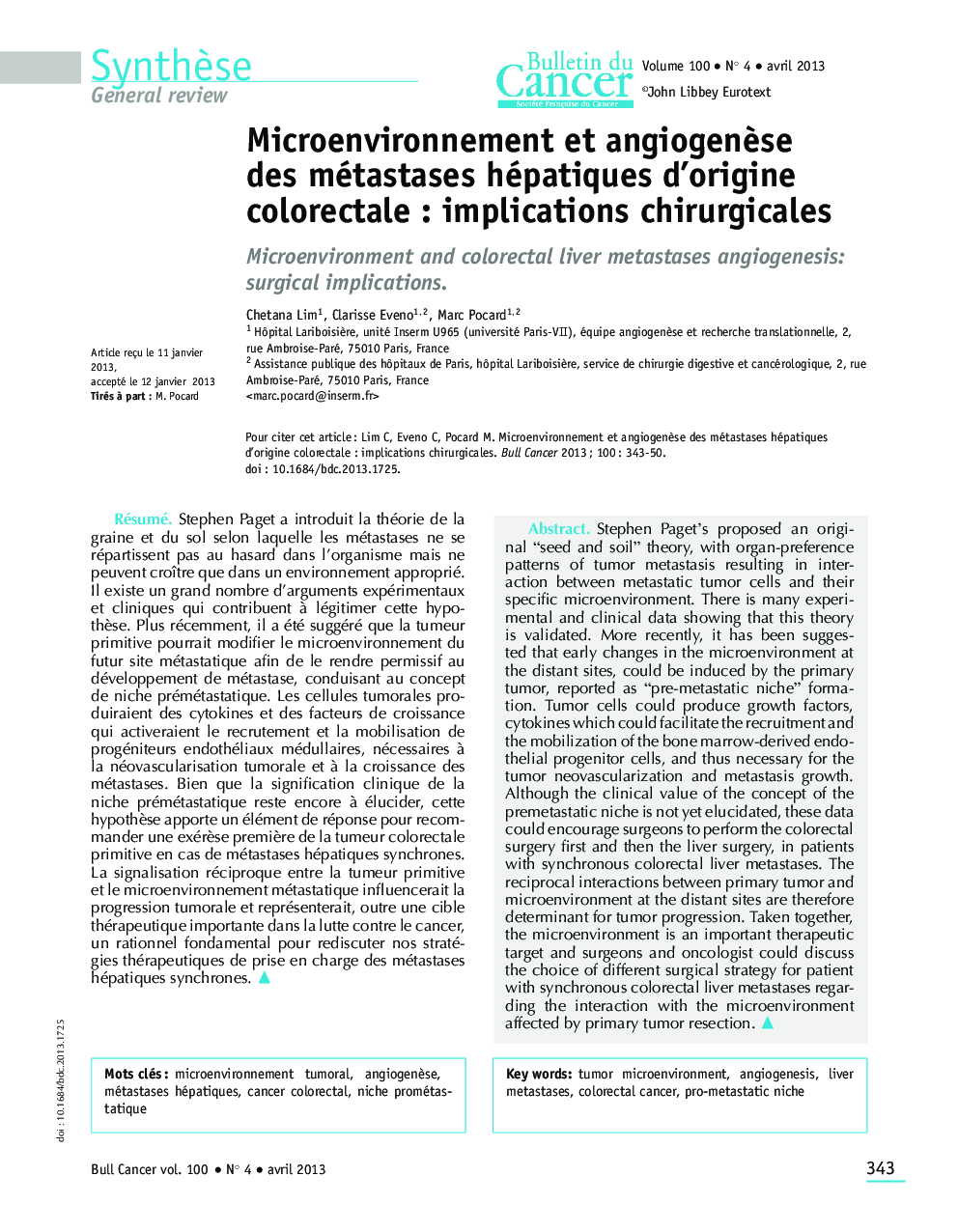| Article ID | Journal | Published Year | Pages | File Type |
|---|---|---|---|---|
| 3978760 | Bulletin du Cancer | 2013 | 8 Pages |
Abstract
Stephen Paget's proposed an original “seed and soil” theory, with organ-preference patterns of tumor metastasis resulting in interaction between metastatic tumor cells and their specific microenvironment. There is many experimental and clinical data showing that this theory is validated. More recently, it has been suggested that early changes in the microenvironment at the distant sites, could be induced by the primary tumor, reported as “pre-metastatic niche” formation. Tumor cells could produce growth factors, cytokines which could facilitate the recruitment and the mobilization of the bone marrow-derived endothelial progenitor cells, and thus necessary for the tumor neovascularization and metastasis growth. Although the clinical value of the concept of the premetastatic niche is not yet elucidated, these data could encourage surgeons to perform the colorectal surgery first and then the liver surgery, in patients with synchronous colorectal liver metastases. The reciprocal interactions between primary tumor and microenvironment at the distant sites are therefore determinant for tumor progression. Taken together, the microenvironment is an important therapeutic target and surgeons and oncologist could discuss the choice of different surgical strategy for patient with synchronous colorectal liver metastases regarding the interaction with the microenvironment affected by primary tumor resection.
Keywords
Related Topics
Health Sciences
Medicine and Dentistry
Oncology
Authors
Chetana Lim, Clarisse Eveno, Marc Pocard,
